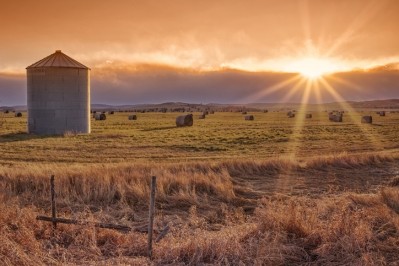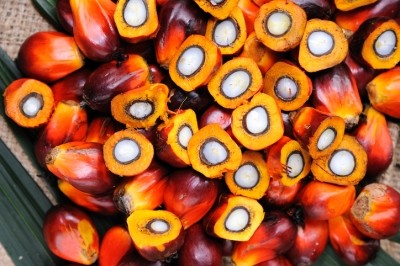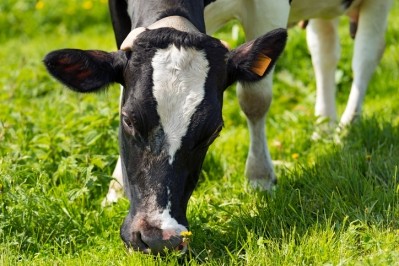Cleanfarms eyes empty grain bags in recycling project expansion

The program is led by the Agricultural Plastic Recycling Group (APRG) and is being managed by Cleanfarms. The Canadian organization announced the pilot – Alberta Ag-Plastic. Recycle It! – to recycle grain bags and haybale twine along with the opening of a new office in Alberta in February.
Initially, the agriculture industry recycling program focused on pesticide containers, followed by unused pesticides and medicated animal health products, said Barry Friesen, general manager with Cleanfarms. However, that has expanded to account for a wider range of industry-generated plastics.
“Our mandate was to offer stewardship programs for all of agriculture – not just pesticide and fertilizer containers and unwanted pesticides and animal health products but all kinds of products – and particularly ag plastics,” he told FeedNavigator.
The organization has 1,500 collection points across Canada and projects in multiple provinces, he said. The agricultural products collected for recycling differ by province based on the needs of producers.
“Grain bags are primarily out west, for instance, that why there’s a bigger push to collect those materials,” Friesen said. “There is dairy in every providence, but it’s more concentrated in the east, and so there’s a big push to collect bale wrap and twine.”
However, the program has seen challenges in recent years as countries, like China, that once recycled multiple products, including plastic, generated in other regions stopped accepting recyclables, he said. The shift has forced the development of new infrastructure within Canada to address waste plastic – including grain bags, haybale wrap and the twine used on hay and straw.
“They shut their doors two years ago, so now there are big challenges finding markets,” he said. “What happens today is that materials that are not managed end up in landfills, filling up landfills or, god forbid, are being burned through open burning or in incinerators – without a program, there are no good options for these materials.”
“That’s why we’ve been working to develop new programs, we estimate that of the ag plastics generated on-farm we collect about 10% of them,” he added.
Cleanfarms estimates that it collects about 10% of the recyclable agricultural-related plastic, said Friesen. “We started to collect some of the most challenging ones – the pesticide and fertilizer containers, and obsolete chemicals for safe disposal.”
However, there remains a range of products to collect and more work to be done gathering more of items that are currently recyclable, he said.
Starting, developing Cleanfarms
Now in its tenth year, Cleanfarms took over work being done by Crop Life Canada, said Friesen.
The non-profit recycling program is funded several ways, he said. “We’re a mix of voluntary and regulatory programs we’re industry-led,” he added.
The organization is guided by a board that includes industry members including manufactures, developers, and distributors of the different products and packaging materials collected, he said.
“These members pay for us to do it,” he said. Some products include the recycling fees in the total cost of the feed or crop product while other products have a fee at purchase.
In addition to organizing recycling of plastics used in agricultural production, Cleanfarms also tracks the products it collected throughout the recycling process, said Friesen. “Traceability is important because gone are the days when they thought they were recycling, and things went into the landfill.”
Currently, both small and bulk containers are turned into high-density drainage tile that can be used in an agricultural setting, he said. However, some products like seed and pesticide bags are incinerated for energy capture.
“Obsolete products and animal health products these cannot be recycled, they have to be destroyed,” he said. “The grain bags are being made into a variety of products – a lot are going into another kind of film like garbage bags and carryout sacks and the like and that will probably be changing, the ultimate goal of all the recycling is to make the same thing out of the old thing.”
Industry challenges
The largest challenge to addressing waste remains infrastructure, said Friesen.
“There’s no technical barrier to recycling any of these materials, it’s just is there infrastructure available,” he said. “We can collect it but where do we take it.”
Before Cleanfarms can start collecting recyclables, there has to be a place where they can be taken, he said. It does not make sense to stockpile products.
However, the infrastructure needed to manage the recycling of agricultural plastics has been increasing in all provinces, he said.
In addition to struggles with infrastructure, there have been some challenges in ensuring that plastic products are prepared in the correct way and delivered to a collection point, Friesen said.
“Plastic recyclers are plastic recyclers – they’re not composting plants, they’re not landfills – they want clean material,” he said. “They want to recycle the material they don’t want to recycle the dirt and the moisture and the like – it’s making sure that they’re properly washed, cleaned and taken back in the right form.”
Grain bag recycling
Cleanfarms started expanded its focus to include grain bags with a program in Saskatchewan two years ago, said Friesen. In that province, it has reached a 50% recovery rate on grain bags.
“Farmers want solutions and they’ll willing to do it and go the extra mile to prepare the materials, so they can be recycled,” he said. “They’re like everybody else, they want to do the right thing and the right sustainable thing, but they also want to make sure that we’re doing the right thing as well.”
The pilot in Alberta was initiated based on producer interest and is being supported with governmental funding, he said. There are about 20 pickup locations for grain bags and plastics, but the intention is to keep expanding the number every year.
The pilot project looks to eliminate the “bugs” in the system including providing educational outreach and establishing the best collection method, he said. Farmers are being asked to bring in clean, rolled grain bags and depending on the condition of recycled bags there may need to be additional outreach to address the processing or regarding site selection.
“Grain bags are quite large – it’s not really a bag, it’s a large tube and each one will weigh about 300lb when rolled up, so it’s a big massive piece of plastic,” he added.
In addition to the pilot in Alberta, one also is ongoing in Manitoba, Friesen said. “We’re operating pilots there with the intention that those will be permanent projects there very soon.”












